Roots of Style: The Birth of Modern Architecture
How did modernism find its way into residential architecture? Consider the meaning of "modern" within the context of the development of a style. "Modern" in this sense is the creation of a new aesthetic without building upon or interpreting earlier styles.
Two phases of modern residential design took place in the early 20th century. The first phase included Prairie and Craftsman styles, which came to a halt due to World War I, and a second phase included art moderne, art deco and International style. This second phase, occurring during the 1930s, was also brief and not nearly as prolific as the first, due to World War II.
Around 1900 Frank Lloyd Wright and a few other Midwestern architects who were part of what's known as the Prairie School created a new vocabulary of design. Their buildings were not trimmed or decorated in any preceding ornamental fashion but were uniquely detailed with simpler materials confidently overlaid on solid and horizontally emphasizing forms.
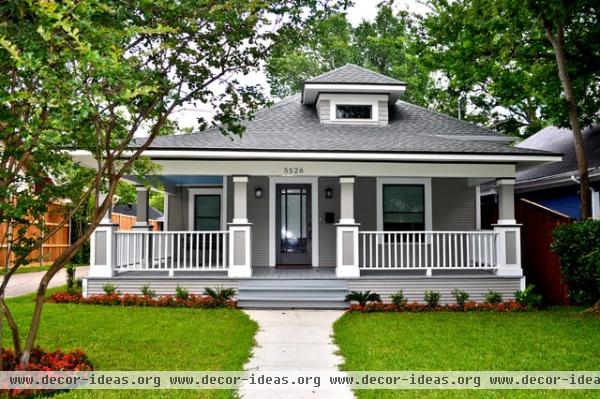
Prairie
Frank Lloyd Wright deserves significant credit for contributing to the formation of 20th-century residential architectural fashion. His 1893 Winslow House in River Forest, Illinois, predicted many trends in the coming century. The design emphasized horizontal elements, unlike Victorian themes of that time, and a simpler and unified aesthetic, which felt grounded and related more organically to the landscape. His other ideas, such as Broadacre City, preceded and aligned with the influence of the automobile.
This house may be familiar to many Americans, for this fashion stretches from coast to coast and survives in many forms. A generous front porch is covered by a hip roof, where a hipped dormer allows light into the attic space. The continuous eave line confidently surrounds the structure and maintains its low profile.
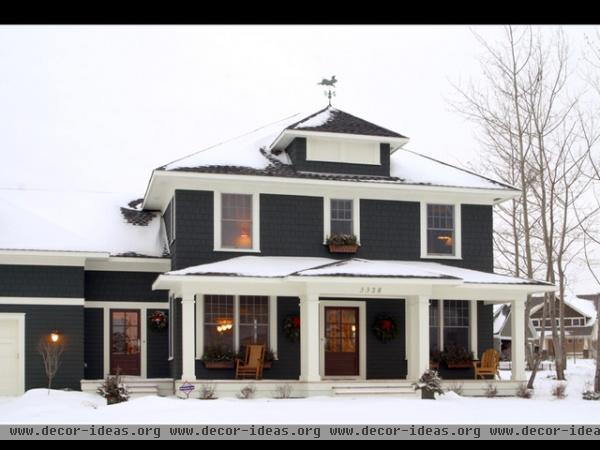
This house resembles the previous in form, and its second level, which became more common, also emphasizes horizontal elements and has generous eaves typical of the style. Some homes of this type are called foursquares, but the massing and simplified elevations mimic the aesthetic created by the Prairie School.
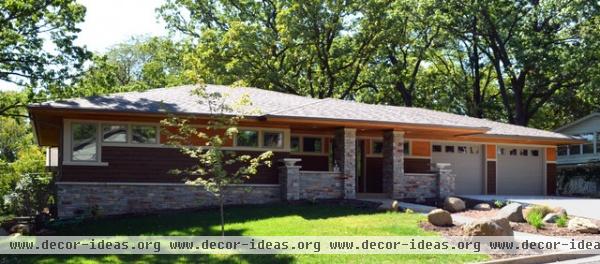
This new house adheres to Prairie details faithfully, yet its overall impression is characteristic of hundreds of thousands of similarly shaped houses across North America. Low-pitched, hipped roofs with broad eaves and a long, low elevation integrate the garage comfortably into its design, a trait significant to later-20th-century dwellings. The Prairie period was relatively brief, occurring from 1900 to 1920, but its influence translated into the ranch style, which began in the 1930s and persisted for most of the century.
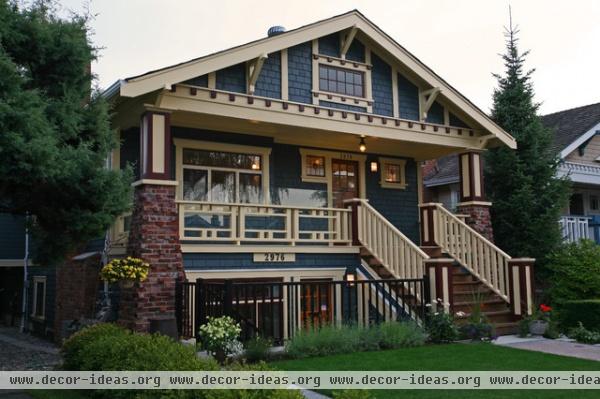
Craftsman
This style began in California around 1903 and became one of the most popular of the 20th century in the U.S. The Greene brothers, architects in Pasadena, developed a bungalow-type structure rich with wood detail influenced partly by the English Arts and Crafts movement and partly by Asian wooden structures. The intimate scale and warm details could be translated into small and modest homes or expressed more elaborately in larger examples.
Due to the popularity of this style, there are many variations on the theme, but they are usually detailed with some type of generous front porch. Columns can be straight and set atop tapered brick pedestals, as in this example, but this detail varies widely.
Decorative brackets visually support the rake (the upwardly sloping eave of the gable end) in most types, and a flared lintel detail above each window trim piece is common.
Notice the railing on this porch; variations often make a particular house unique. They can have shingle siding, but clapboard and stucco also occur. Brick is normally used for porch pedestals and chimneys, as is the case with this house.
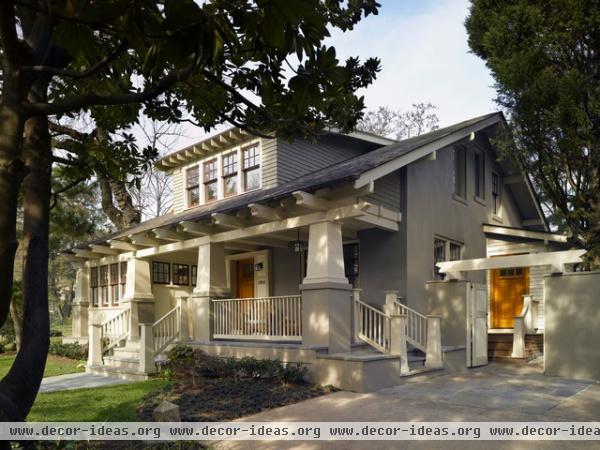
This remodeled and updated house has tapered wood columns set on stucco pedestals. In contrast to the previous house, the roof formation is a side gable, rather than front facing. A shed dormer penetrates the main roof form. This is a common Craftsman characteristic. Also notice the mixture of stucco and shingle siding.
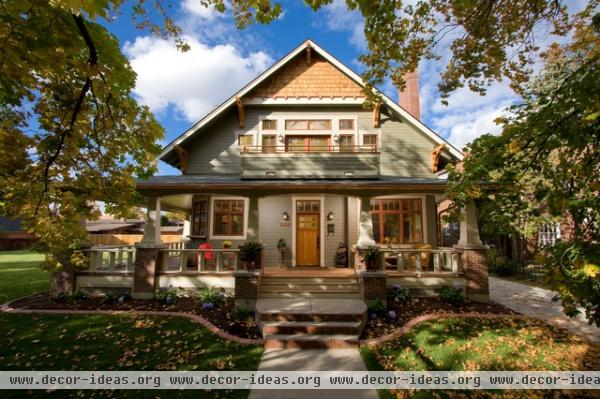
This new house has been designed with Craftsman details likely to be found on originals, but it also has a few features that define it as a neo-Craftsman. Both the arched lintel between the porch posts and the French doors leading onto a deck wrapped by the main roof and parapet railing are distinct contemporary adaptations.
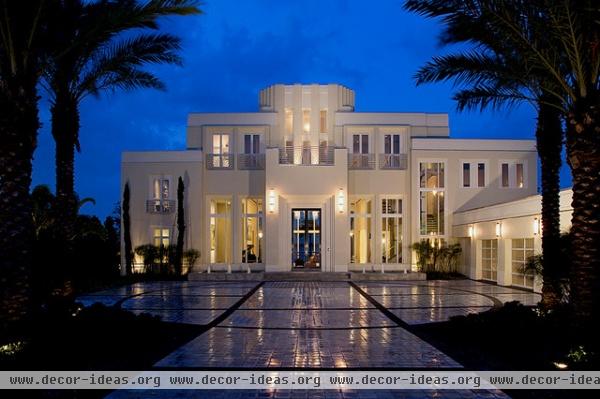
Art Deco
The word "modern" in the context of architecture commonly brings to mind white stucco, glass walls and flat roofs. These are the characteristics of three important styles that developed between World War I and World War II. Art deco, art moderne and International styles sprouted from the age of the machine. Developed countries around the world had all firmly entered industrialization, and architecture reflected the phenomenon with a new aesthetic.
The International style developed in Europe through the architecture of Le Corbusier and Mies van der Rohe, among others. The Finnish architect Eliel Saarinen is credited with deco's having won second place in an important competition in 1922 in Chicago.
This new art deco–inspired residence illustrates vertical emphasis characteristic of the style. Many originals of the day were much more detailed, with decorations of chevron patterns along with reeding and fluting at door and window surrounds. More commonly found in commercial or apartment buildings of the 1930s, this style was highly adaptable.
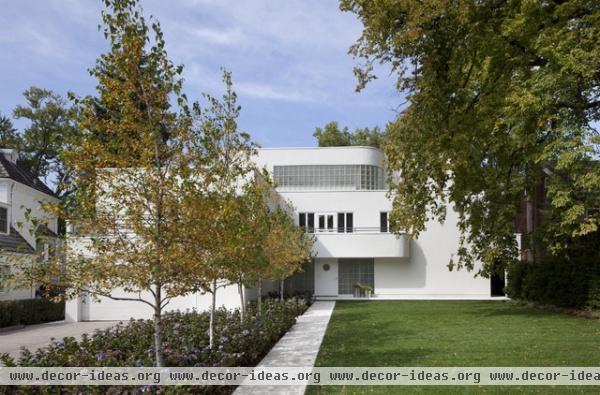
Art Moderne
More prevalent in residences than in commercial buildings, the art moderne style played on the theme of streamlined machines. Cars, ships, toasters and quite a few other objects became places for expression of the aesthetic. Note the curved glass block wall in this example. Though there are few houses today that can be classified as being this style, glass block has continued to be a favorite material for translucent walls and windows in many American houses.
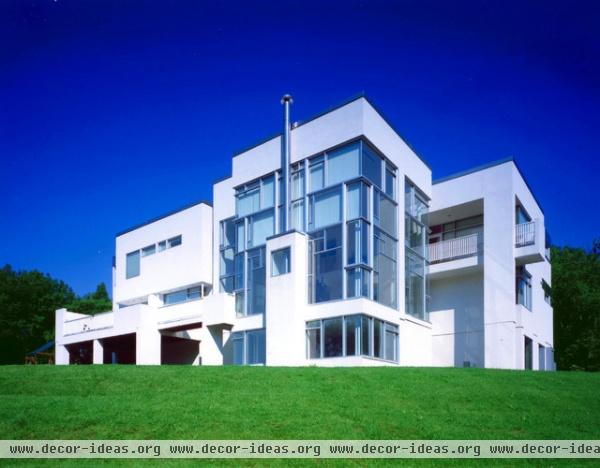
International
European architects of the 1920s and 1930s adopted a philosophy of no ornamentation, and all elements served only functional purposes. The beauty of a building was to be achieved by the exactness of machine-finished materials and structural transparency. For the first time, exterior walls were not structural and were labeled curtain walls. The structure (usually steel) occurred on the interior of the building, and supports were placed to allow as much freedom as possible for interior configuration.
Seen in this house is a sharply executed arrangement of elements. The chimney is a floating cylinder, the walls above the windows appear to float, and the forms appear to enclose indoor as well as outdoor spaces. Windows are grouped or stretched in long rows, and razor-thin supports define separation.
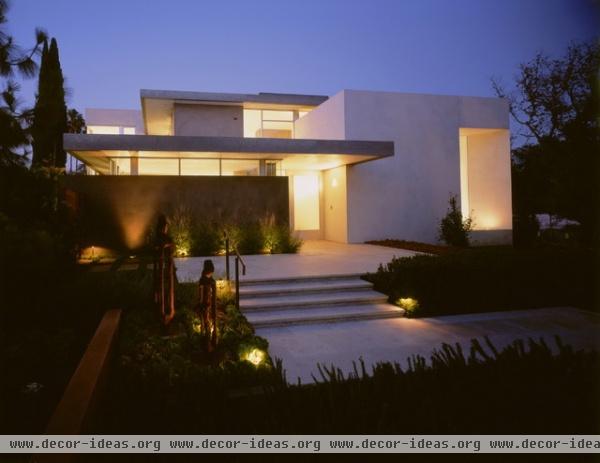
Notice how the architects have given the impression of a floating roof in this Los Angeles house. The windows are either large, focusing on a particular point of interest, or arranged in ribbons and mitered at the corners. The walls of the house appear massive and solid, like large blocks. The details are flush and smooth.
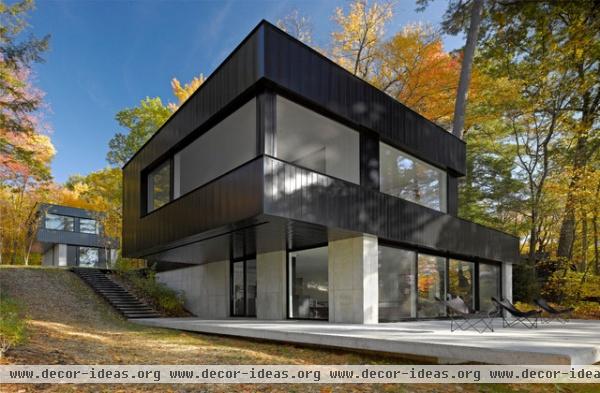
In this wonderful Vermont house, the cantilever of a second level serves as protection to an entrance. The materials are detailed to feel precise and crisp. The windows and doors align horizontally and are flush with the ceiling and the floor. Notice how even the patio extends over the slope of the landscape, but is not too high off the ground, as a railing would spoil the scheme.
Particularly influenced by the German Bauhaus school, the International style set into motion an architectural discipline that is, to this day, essential and formative to the profession.
Historically, the trajectory is fascinating. The style became popular in Europe before World War II but lost favor after the war; it subsequently regained popularity later in the century. In America, despite art deco and art moderne, residential fashion of the 1920s and 1930s was dominated by revivals and eclecticism.
It was not until after World War II did this style fold into an American mainstream vernacular, as we shall see in a future ideabook.
More: Where Did Your House Get Its Look? | Le Corbusier: Pioneer of Modern Architecture












